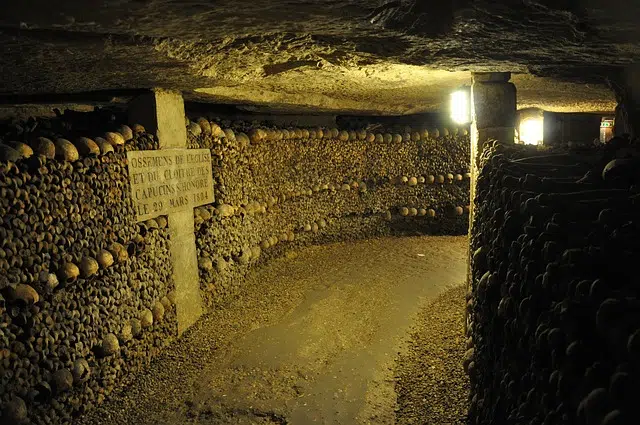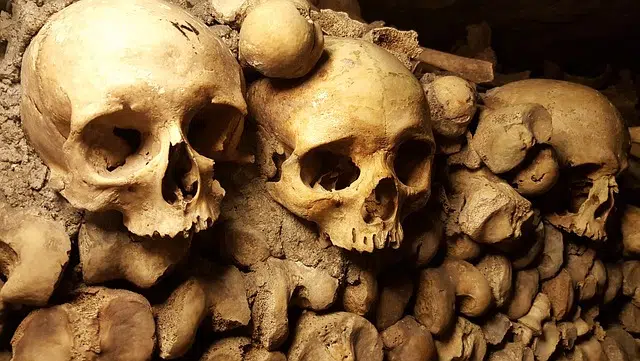
The catacombs of Paris are very important worldwide
The catacombs are underground tunnels that the first Christians used for the burial of the deceased and the development of their ceremonies . The term, which is used in the plural, comes from the late Latin word catacumbae .
Primitive cemeteries
It can be said that the catacombs were the cemeteries that the early Christians and also the Hebrews developed underground. Most of the catacombs were built in Rome between the 2nd century and the mid -5th century .
Born as burial sites , the catacombs were also used for the celebration of funerary rites and the commemoration of the anniversaries of the dead . In some cases, when they were persecuted, Christians also took advantage of them to celebrate the Eucharist .
From the 4th century onwards, while they continued to be used to bury the remains of the deceased, the catacombs were erected as places of pilgrimage and shrines to martyrs . This led to the need to expand them.
Among the most important in the world are the catacombs of Kom el Shogafa in Egypt and the catacombs of Lima in Peru , each of these spaces with its particular origins and characteristics. We can also highlight those of Rome, Paris and Odessa.
Catacombs of Rome
The catacombs of Rome extend over more than 150 kilometers like a network and are home to some 750,000 tombs . The niches, in this framework, were created in the walls of the tunnels. In the Italian territory there are also the catacombs of the Capuchins , in Palermo , much more modern.
This burial site was created in the early days of Christianity and has more than 60 catacombs, almost all underground along the Appian Way, one of the most important roads in the ancient empire.
On the walls of the catacombs of Rome we can see rectangular niches of various sizes, which could house a variable number of bodies. It should be noted that in the early days of Christianity, the followers of Jesus carried out burial in external necropolises.
Paris Catacombs
The catacombs of Paris , meanwhile, were developed where, in times of the Roman Empire , there were limestone mines. Only in the 18th century was the place converted into a cemetery .
It is one of the most popular spots in the French city. As was customary in the manufacture of the catacombs, they are also made up of a labyrinthine network of corridors and rooms. Today it is a space where millions of skeletons are collected, the largest on the entire European continent .
Odessa Catacombs
The Odessa Catacombs are located in Ukraine and have an area of approximately 2,500 kilometers of intricate passageways made of shell limestone that extend beneath the surface of the city. Originally, these caves arose from the chemical weathering processes of certain rocks, some of which were also used to build the city of Odessa itself.

The collection of ancient skeletons is fascinating for researchers.
Despite the great importance that Odessa has at the national level, until recently no skyscrapers had been erected on its territory because the characteristics of the soil were not adequate to support its weight in safe conditions for citizens.
During the time of the Russian Empire, catacombs were often used by Freemasons and smugglers for their operations. When fascist troops arrived in 1941, they began to act as fortresses of Soviet power.
To access it today it is necessary to go through some buildings or ravines; the latter may be on the coast or near the urban area. Anyway, almost all the entrances have been blocked.
